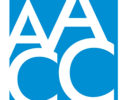Report roundup
By AACC 21st Century Center Staff
November 21, 2019
A monthly roundup of reports of interest to the community college sector.
Here are three reports you should know about this month.
-
- A report from the National Student Clearinghouse Research Center shows that community colleges are the most common destination for adults who had previously left college without earning a credential but now are coming back. Public two-year colleges also are the largest single sector awarding credentials to these students. Overall, there are 36 million people in the U.S. identified by the center as having “some college, no degree” — a 22 percent increase from 29 million in 2013. However, 3.8 million of them returned to college in the last five years, with about 940,000 earning their first undergraduate credential. Another 1.1 million are still enrolled and pursuing a credential, according to the report.
- While a growing number of two- and four-year colleges are branching beyond traditional approaches to developmental education, it’s not yet happening at scale, according to a new study by the Center for Analysis of Postsecondary Readiness (CAPR). Standardized tests are still widely being used to assess college readiness. Nearly 40 percent of surveyed colleges use only one measure to assess students’ skills, and more than 90 percent of these use only standardized assessments. The good news is that, over the past decade, more colleges are testing new approaches to developmental education. The CAPR survey shows a 30 percentage-point increase in the proportion of colleges using additional measures to assess students’ readiness since 2011. Those measures include high school grades to gauge college readiness, and they are implementing instructional reforms, such as compressing developmental courses into shorter periods and integrating developmental education into for-credit courses, the study says.
- Community colleges and many certificate programs have higher returns on investment in the short term, according to a new report from Georgetown University’s Center on Education and the Workforce (CEW). Twenty-six of the 30 institutions with the best short-term net economic gains primarily grant certificates or associate degrees. Because these programs require fewer credits to complete, students often end up with less debt and can enter the workforce sooner, the report notes. In the long run, however, the returns of these programs fall behind those of bachelor’s degree-granting institutions because students’ earnings are lower. The report used data from the expanded federal College Scorecard to rank 4,500 colleges and universities by return on investment. CEW also developed an online tool that allows users to sort data on tuition, median student debt and median earnings for each institution.



